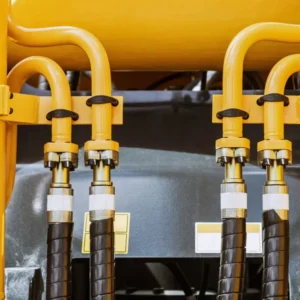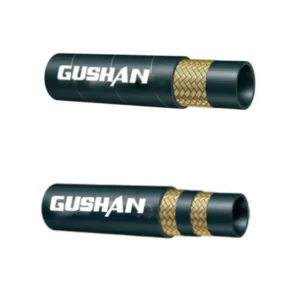Hydraulic hose failure can lead to significant downtime, costly repairs, and potential safety hazards. Understanding the common causes of hose failure is crucial to prevent such incidents.
In this blog post, we will delve into the primary factors that contribute to hydraulic hose failure and explore effective mitigation strategies to ensure the reliability and safety of your hydraulic systems.
Hydraulic Hose Failure Analysis
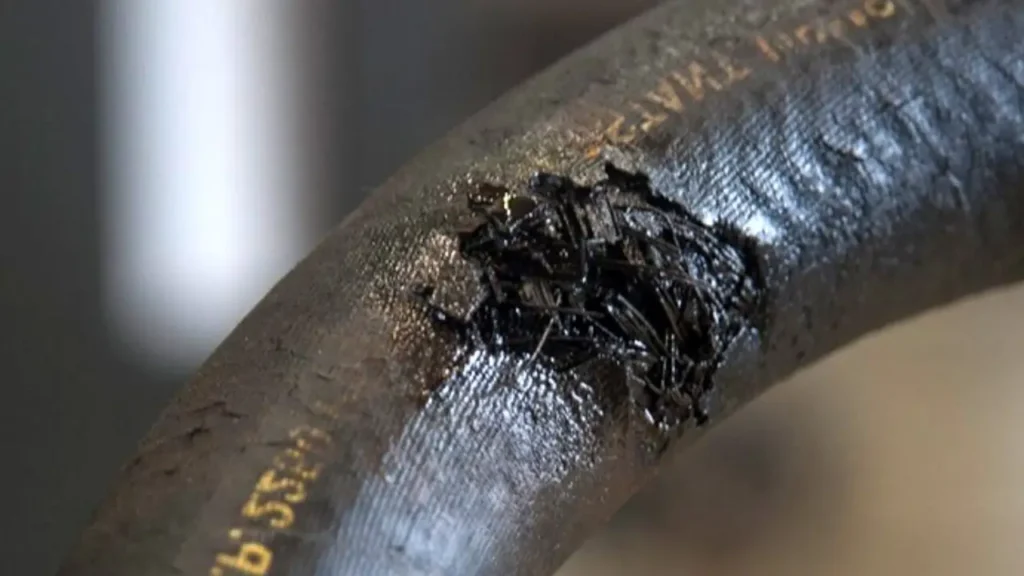
Hydraulic hose failure can lead to significant downtime, safety risks, and costly repairs. To prevent such incidents, it’s crucial to understand the common causes of hose failure and implement preventive measures.
Common Causes of Hydraulic Hose Failure
Hydraulic hose failure can lead to significant downtime, safety hazards, and costly repairs. Understanding the common causes of hose failure is crucial to prevent such incidents. Here’s a deeper look into the most common causes:
1. Abrasion
- Wear and tear caused by friction against nearby components.
- Prevention: Use protective sleeves or guards to shield hoses from abrasion and implement proper routing to minimize contact with other components.
2. Cut or Puncture
- Physical damage caused by sharp objects, impacts, or improper handling.
- Prevention: Avoid routing hoses near sharp edges or potential impact zones. Use caution during installation and maintenance.
3. Excessive Radius Bending
- Exceeding the minimum bend radius can weaken the hose material, leading to cracks and leaks.
- Prevention: Ensure proper hose routing, avoiding sharp bends and kinks.
4. Heat Damage
- Exposure to high temperatures can degrade the hose material, causing it to become brittle and crack.
- Prevention: Use heat-resistant hoses and avoid routing them near heat sources.
5. Fluid Incompatibility
- Using incompatible fluids can cause the hose material to deteriorate and lead to premature failure.
- Prevention: Always use the correct fluid specified by the manufacturer.
6. Improper Hydraulic Hose Installation
- Incorrect installation, such as overtightening fittings or improper routing, can lead to leaks and damage.
- Prevention: Follow the manufacturer‘s instructions and use proper tools and techniques.
7. Age and Fatigue
- Over time, hoses can deteriorate due to age and exposure to various factors.
- Prevention: Implement a regular inspection and replacement schedule.
By understanding these common causes and taking preventive measures, you can significantly reduce the risk of hydraulic hose failure and ensure the safety and reliability of your hydraulic systems.
Analyzing Hydraulic Hose Failures
To prevent future failures, it’s essential to conduct a thorough analysis of failed hoses. This involves:
- Visual Inspection: Examine the failed hose for signs of wear, cuts, cracks, or other damage.
- Fluid Analysis: Check the hydraulic fluid for contamination or degradation.
- Pressure Testing: Test the hose and fittings for leaks and pressure capacity.
- Root Cause Analysis: Identify the underlying cause of the failure, such as improper installation, excessive pressure, or heat damage.
By understanding the root causes of hydraulic hose failures, you can take steps to prevent future incidents and improve the reliability of your hydraulic systems.
How to Solve Hydraulic Hose Damage
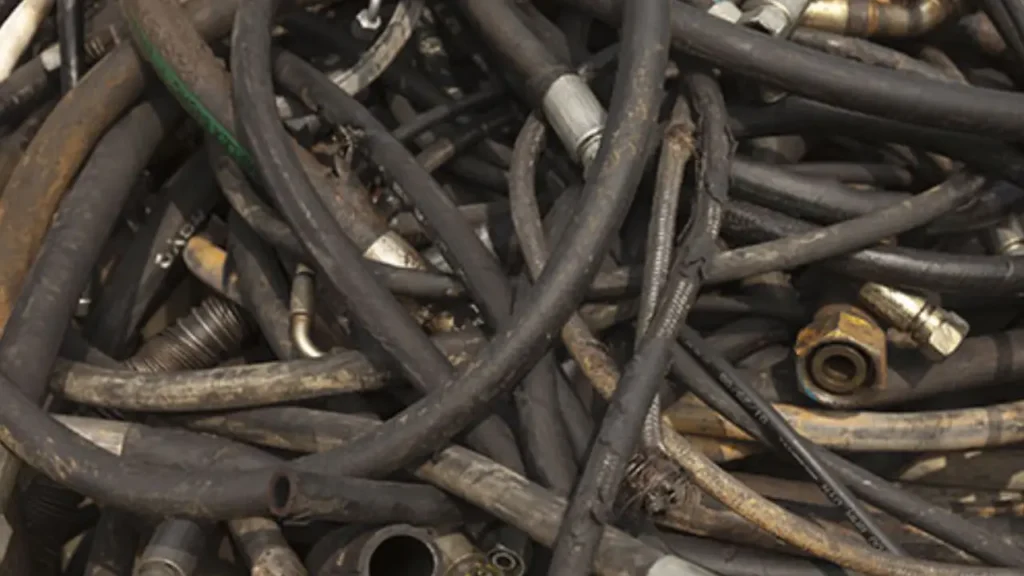
Note: While temporary fixes can be made, it’s crucial to replace a damaged hydraulic hose as soon as possible. Temporary repairs should only be used in emergencies.
Hydraulic hoses are critical components in machinery, but they are prone to wear, leaks, or rupture. Properly addressing hose damage ensures safety, prevents downtime, and extends equipment life. Understanding the correct repair and maintenance steps is essential for any operator or technician.
Step 1: Identify the Damage
The first step is to carefully inspect the hydraulic hose for visible signs of wear, leaks, cracks, or bulges. Accurate identification of the damaged area is crucial for effective repair or replacement, preventing further system failures.
Once the damaged section is located, mark it clearly to avoid confusion during the repair process. Evaluating the severity of the damage helps decide whether the hose requires a simple patch, clamp, or complete replacement to maintain optimal system performance.
Step 2: Depressurize the System
Before attempting any repair, ensure the hydraulic system is fully depressurized to prevent accidents. Releasing pressure eliminates the risk of high-pressure fluid spray, which can cause injury or worsen hose damage.
Turn off the equipment and follow manufacturer guidelines for safely relieving residual pressure. Confirm that all hydraulic circuits are depressurized using gauges or manual checks before proceeding with any hose repair or removal.
Step 3: Remove the Damaged Hose
Carefully disconnect the damaged hose from the system fittings. Use proper tools to avoid damaging connectors or surrounding components, ensuring a smooth replacement process without introducing new leaks or alignment issues.
Inspect the fittings and connectors for wear or corrosion while the hose is removed. Cleaning and checking these parts prevent contamination, maintain seal integrity, and ensure the new hose fits securely for long-lasting performance.
Step 4: Select and Install a Replacement Hose
Choose a hydraulic hose with the correct specifications, including diameter, pressure rating, and material compatibility. Proper selection ensures safe operation and prevents repeated failures in the hydraulic system.
Install the new hose carefully, avoiding twists or kinks that can compromise fluid flow. Tighten fittings to manufacturer-recommended torque and verify proper routing to prevent abrasion, heat exposure, or interference with moving parts.
Step 5: Test and Monitor the System
After installation, gradually pressurize the hydraulic system and check for leaks or abnormal performance. Testing ensures the repair is effective and the system operates safely under normal load conditions.
Monitor the repaired hose during initial operation for any signs of leakage, vibration, or unusual wear. Regular inspection and preventive maintenance help identify potential problems early, extending hose life and ensuring reliable hydraulic system performance.
Hydraulic Hose Leaking at Fitting

Hydraulic hose leaks at fittings are common issues that can reduce system efficiency, create safety hazards, and increase maintenance costs. Leaks often result from loose connections, worn seals, or damaged hoses. Addressing these leaks promptly ensures optimal system performance, prevents fluid loss, and protects both equipment and operators.
Common Causes of Leaks at Fittings
- Loose fittings: Over time, vibrations and pressure cycles can loosen connections, leading to leaks.
- Worn or damaged seals: Seals deteriorate under heat and pressure, causing fluid seepage.
- Hose damage near fittings: Abrasion, kinking, or aging can weaken the hose, resulting in leaks.
- Incorrect installation: Misaligned or improperly tightened fittings can compromise sealing.
Loose or worn components must be identified immediately to prevent further damage or safety hazards. Inspecting fittings and seals regularly helps detect issues early, ensuring hydraulic systems remain reliable and fluid leaks are minimized, saving both time and repair costs.
How to Fix Hydraulic Hose Leaks at Fittings
- Tighten loose fittings: Use proper torque specifications to secure connections without over-tightening.
- Replace damaged seals: Select compatible seals and ensure correct installation for a proper seal.
- Inspect and replace hoses: Remove hoses showing wear or cracks near the fittings.
- Re-align and clean connections: Ensure fittings are aligned and free from debris for optimal sealing.
After repairs, always test the system under operating pressure to verify the leak is resolved. Monitoring connections regularly helps prevent recurring issues, maintains system integrity, and prolongs the life of both hoses and fittings while ensuring safe operation.
Hydraulic Hose Breakdown Prevention Tips
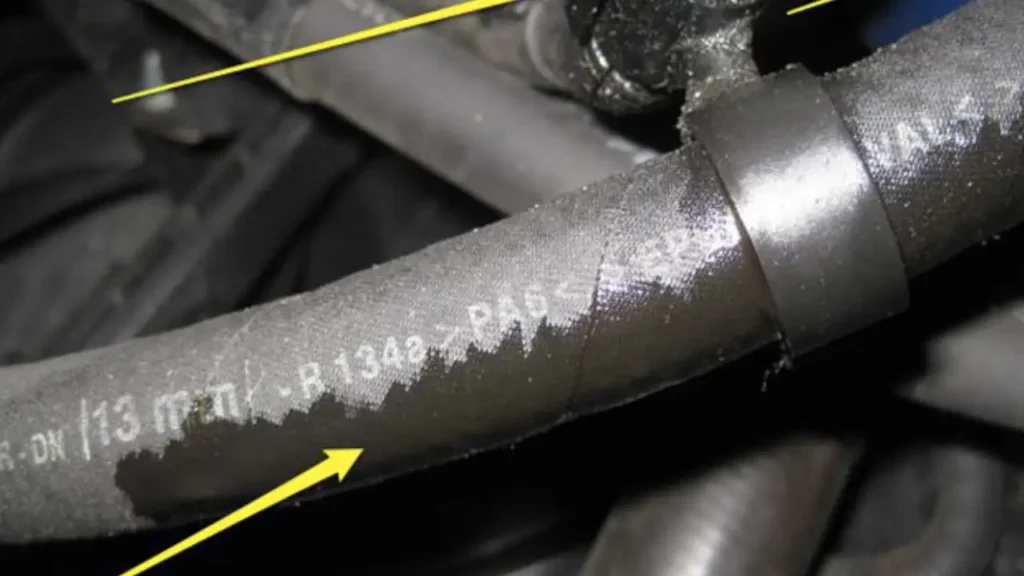
To prevent hydraulic hose failure and ensure the longevity of your hydraulic system, consider these key tips:
Regular Inspection and Maintenance
- Visual Inspection: Regularly check hoses for signs of wear, cuts, cracks, or leaks.
- Pressure Testing: Periodically pressure test hoses to identify potential weaknesses.
- Fluid Contamination: Monitor hydraulic fluid for contamination, as it can accelerate hose degradation.
Proper Installation and Routing
- Avoid Excessive Bending: Excessive bending can weaken the hose and lead to premature failure.
- Protect from Abrasion: Use protective sleeves or guards to shield hoses from abrasion and other damage.
- Secure Hoses: Properly secure hoses to prevent movement and chafing.
- Avoid Heat Sources: Keep hoses away from heat sources to prevent heat damage.
Choose the Right Hose
- Pressure Rating: Select a hose with a pressure rating that exceeds the maximum operating pressure of your system.
- Temperature Rating: Ensure the hose can withstand the temperature extremes of your application.
- Fluid Compatibility: Choose a hose that is compatible with the hydraulic fluid being used.
Additional Tips:
- Regularly Replace Hoses: Even with proper maintenance, hoses will eventually wear out. Replace hoses according to the manufacturer‘s recommended intervals.
- Train Operators: Train operators to recognize signs of hose wear and to report any issues promptly.
- Emergency Procedures: Have a plan in place for handling hydraulic hose failures, including emergency shut-down procedures.
By following these preventative measures, you can significantly reduce the risk of hydraulic hose failures and improve the overall reliability of your hydraulic system.
How to Avoid Hydraulic Hose Failure

Preventing hydraulic hose failure is a critical practice for maintaining machine uptime and safety. The key is a proactive approach focusing on correct component selection, proper installation and routing, and consistent visual inspection. Implementing these best practices dramatically extends the service life of every hose assembly.
- Use the STAMPED Selection Method Always adhere to the STAMPED criteria (Size, Temperature, Application, Media, Pressure, Ends, Delivery) when selecting a hose. This systematic process ensures the hose’s working pressure, material compatibility, and temperature rating match the specific demands of your hydraulic system and environment.
- Adhere to Minimum Bend Radius (MBR) Never bend a hose assembly tighter than the manufacturer’s specified MBR. Proper routing requires using fittings (like 45° or 90° elbows) or longer hoses to achieve the correct gentle curve, preventing the internal reinforcement from kinking or failing.
- Avoid Twisting During Installation A twisted hose severely reduces the integrity of the reinforcement wires and can shorten its life by up to 90%. Use the printed lay line on the hose as a visual guide to ensure it remains straight and only flexes in a single plane of movement.
- Protect Against External Abrasion Abrasion from rubbing against other hoses, machine components, or sharp edges is the most common cause of failure. Route hoses with sufficient clearance, use clamps to secure them, or install protective sleeves and wraps in high-wear areas to shield the outer cover.
- Ensure Correct Hose Length and Slack Hoses contract slightly when pressurized, so they must not be installed fully taut. Allow for a small degree of slack or a gentle loop to accommodate length changes, preventing excessive tension on the hose and fittings, which can lead to blow-off or early fatigue.
- Implement Regular Visual Inspections Conduct daily pre-shift inspections for common signs of damage, such as cover blistering, cracks, external leaks near fittings, or excessive wear (abrasion). Replacing a compromised hose immediately is far cheaper and safer than waiting for a complete rupture and system shutdown.
Conclusion
By understanding the common causes of hydraulic hose failure and implementing preventive measures, you can significantly reduce the risk of equipment downtime and costly repairs. Regular inspection, proper maintenance, and the use of high-quality hoses are crucial for ensuring the reliability and safety of your hydraulic systems.
Ready to upgrade your hydraulic systems with high-quality hoses?
Contact us today to explore our wide range of hydraulic hoses and fittings. Our expert team can help you select the right products for your specific application and provide expert advice on installation and maintenance.

